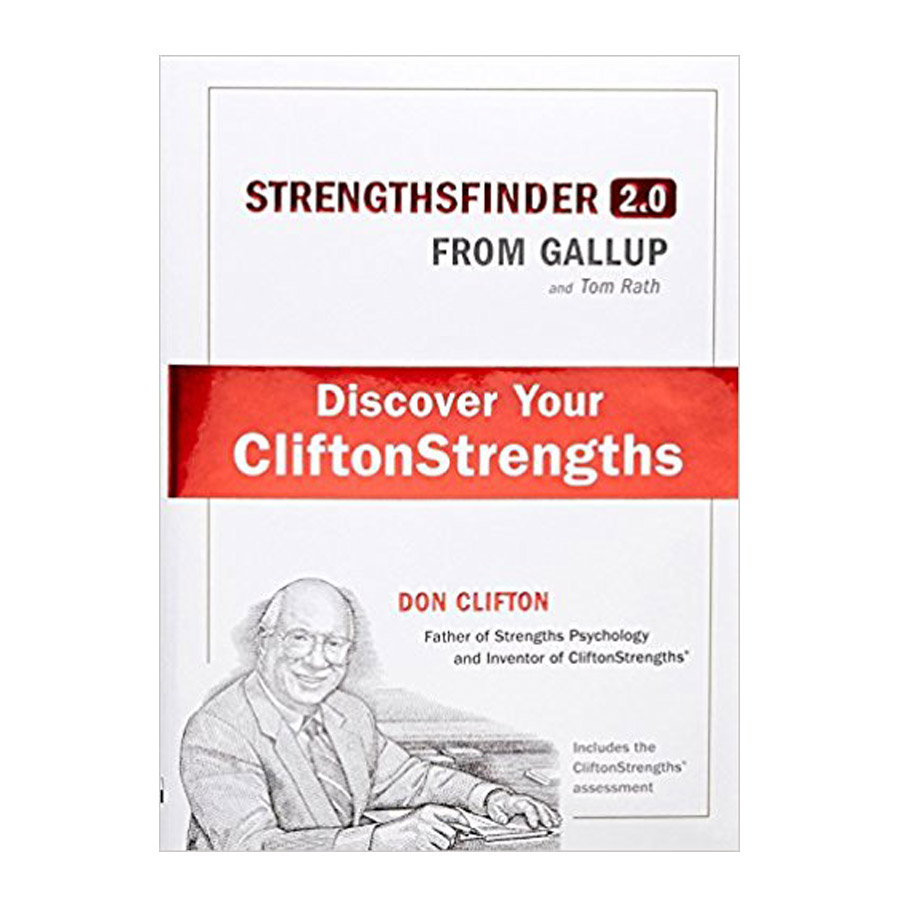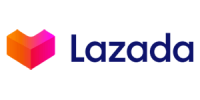StrengthsFinder 2.0
Tác giả: Tom Rath | Xem thêm các sản phẩm Social Sciences của Tom RathMô tả ngắn
Do you have the opportunity to do what you do best every day? Chances are, you don't. All too often, our natural talents go untapped. From the cradle to the cubicle, we devote more time to fixing o...- Giao hàng toàn quốc
- Được kiểm tra hàng
- Thanh toán khi nhận hàng
- Chất lượng, Uy tín
- 7 ngày đổi trả dễ dàng
- Hỗ trợ xuất hóa đơn đỏ
Giới thiệu StrengthsFinder 2.0
Do you have the opportunity to do what you do best every day?
Chances are, you don't. All too often, our natural talents go untapped. From the cradle to the cubicle, we devote more time to fixing our shortcomings than to developing our strengths.
To help people uncover their talents, Gallup introduced the first version of its online assessment, StrengthsFinder, in 2001 which ignited a global conversation and helped millions to discover their top five talents.
In its latest national bestseller, StrengthsFinder 2.0, Gallup unveils the new and improved version of its popular assessment, language of 34 themes, and much more (see below for details). While you can read this book in one sitting, you'll use it as a reference for decades.
Loaded with hundreds of strategies for applying your strengths, this new book and accompanying website will change the way you look at yourself -- and the world around you -- forever.
STRENGTHS: THE NEXT GENERATION
Q&A with author Tom Rath
(From the Gallup Management Journal; interviewed by Jennifer Robison)
Last month, StrengthsFinder 2.0 hit the bookstores. Book browsers, no doubt, had many questions, and among them was probably "Didn't I already read a book about this?"
Well, actually, yes. But the topic was worth revisiting for two reasons. In the six years since the release of Now, Discover Your Strengths, more than 2 million people have taken the Clifton StrengthsFinder assessment, which means billions of people have not yet had the opportunity. The second reason is that Gallup researchers just haven't been able to let the topic rest. Over the past decade, they've done more surveys, more interviews, and more studies; they've prodded and poked and analyzed. And they realized that there's a lot more to understanding human talent than most people know. Those who are familiar with the StrengthsFinder assessment know that it is designed to uncover certain key talents -- patterns of thought, feeling, and behavior that can be productively applied. These patterns are categorized into 34 broad themes -- such as Achiever, Ideation, and Relator -- and those themes indicate and predict one's innate and unique talents. Those talents, when multiplied by the investment of time spent practicing, developing skills, and building knowledge, can become strengths. Some of this is just common sense; it seems intuitive that your performance will be better if you're doing what you naturally do well. But some of it seems counterintuitive and runs directly against conventional wisdom: No amount of training will help you excel in your areas of weakness. You can't do anything you want to do -- or be anything you want to be -- because you're just not going to be good at everything. But if you work with your talents, you can be extraordinary. StrengthsFinder has resonated with the business community because there's a direct link between talent development and performance. In this interview, Tom Rath, author of StrengthsFinder 2.0, discusses what Gallup scientists have learned since the publication of the first book, what more there is to discover about your talents, and why it's bad to focus on your employees' weaknesses, but simply cruel to ignore them completely. GMJ: Why the new book?
Tom Rath: StrengthsFinder 2.0 is an effort to get the core message and language out to a much broader audience. We had no idea how well received the first strengths book would be by general readers -- it was oriented more toward managers -- or that the energy and excitement would continue to grow. More than two million people have taken the StrengthsFinder assessment, and each month, the number of people learning about their talents goes up. But readers keep asking us: "Now that I know about my strengths, what do I do next?" So we went back and surveyed hundreds of them and asked them how they apply their talents. Then we whittled their suggestions down to the ten best ideas for each theme. We also added more than five thousand Strengths Insights to version 2.0 that allow us to offer more individualized theme descriptions than we could before. So, instead of general descriptions of your top five talent themes, in 2.0, you get a talent profile so unique that you're unlikely to share even a sentence with someone else. And as I said, the first book was really written for a business audience. People have had trouble retrofitting the theme descriptions if they are in non-management roles, but they've tried. This book helps readers apply strengths theory to any type of role and gives them ideas to help them apply their talents in their daily life. GMJ: It's been six years since the first book was published, and Gallup has done hundreds of thousands more interviews. Have you discovered anything new about talents and strengths? Have you altered your original premise?
Rath: No, but we've seen more and more evidence that demonstrates that focusing on your talents is important. We did a survey in 2004 that examined what happens when your manager ignores you, focuses on your strengths, or focuses on your weaknesses. We found that if your manager focuses on your strengths, your chances of being actively disengaged go down to one in one hundred. However, if your manager primarily focuses on your weaknesses, your chances of being actively disengaged are 22%, and if your manager ignores you, that percentage rises to 40%. GMJ: Why such a high rate of disengagement among those who are ignored?
Rath: It basically mirrors the psychology of raising kids -- being completely ignored is the worst possible psychological state. You would actually feel better if your manager went from ignoring you to focusing on what you do wrong all the time, because then at least she's paying attention to you. GMJ: Did your new research turn up anything that surprised you?
Rath: We've talked a lot about how strengths can help you be more of who you are, and you get more out of your best players, and all of that. But in the last ten years, we've also found that it's a good strategy just to wipe out the extreme negativity in the workplace. I get this question almost every time I talk to a group: "What do I do about that one person who just drags everyone down every day?" My glib answer was to get rid of the person. I always thought there were some people who were just destined to be disengaged in their jobs because that was their personality, and no matter how hard managers tried, there wasn't much they could do with some of those people. But the data from the last five years would suggest that much of that epidemic of disengagement is fixable. More than I ever would have guessed, it helps tremendously if a manager starts by focusing on someone's strengths. You may not take someone who's actively disengaged and make him into your most engaged employee, but it will help get him out of that mindset where he's scaring off colleagues and customers. GMJ: So is that the business case to be made for putting people in roles that play to their strengths? Rath: I think it's the secondary business case. The main business case is that people have a lot more fun and get a lot more done if they're able to spend time in areas where they have some natural talent. I think that's a fundamental principle that hasn't changed much at all. The one thing that we were clear about in StrengthsFinder 2.0 is that the American dream ideal that "You can be anything you want if you just try hard enough" is detrimental. This is especially true when people buy into it hook, line, and sinker. You may not be able to be anything you want to be, but you can be a lot more of who you already are. [Taking] StrengthsFinder is just a starting point; it's step one of a hundred in figuring out the areas where you have the most potential for growth. GMJ: What is the most challenging aspect of your ongoing strengths research?
Rath: While hundreds of people in our organization continue to research this topic each year, our greatest challenge might be incorporating the new research while making the message even more succinct and applicable to a wider audience. So while we have hundreds of new case studies and meta-analyses about strengths -- and about employee engagement and business outcomes -- we tried to stay as close as we could to the basics. GMJ: The Clifton StrengthsFinder assessment has always categorized talents into thirty-four themes. Have you ever considered adding or subtracting any, or refining them further?
Rath: Yes, we looked at that extensively as we started to review our plan for the updated version of the assessment. We found that so far, the thirty-four themes have done a good job of describing much of what we've learned since releasing the first version of the assessment. If enough people had made a case about a specific theme that didn't exist, we were open to adding that theme. I think we probably will continue to investigate whether there are themes that emerge that we haven't yet picked up on. But there wasn't a real strong case for any additions at this time. GMJ: What would you most like to accomplish with StrengthsFinder 2.0?
Rath: Our big goal and mission as a company is to help people do more of what they do well. We've topped two million completed StrengthsFinder assessments, and it's not too hard to imagine that number getting to twenty million soon. An organization that exists to help people has a responsibility to get better and better. By reaching beyond our initial audience, we help people get the latest and greatest research. But we also hope it helps people live better lives.
Giá sản phẩm trên Tiki đã bao gồm thuế theo luật hiện hành. Bên cạnh đó, tuỳ vào loại sản phẩm, hình thức và địa chỉ giao hàng mà có thể phát sinh thêm chi phí khác như phí vận chuyển, phụ phí hàng cồng kềnh, thuế nhập khẩu (đối với đơn hàng giao từ nước ngoài có giá trị trên 1 triệu đồng).....
Giá SOVRN
Thông tin chi tiết
| Công ty phát hành | Simon & Schuster |
|---|---|
| Nhà xuất bản | Simon & Schuster |
| Ngày xuất bản | 2007-02-01 07:00:00 |
| ISBN-13 | 9781595620156 |
| Kích thước | 178 x 127 x 20 mm |
| Loại bìa | Bìa cứng |
| Số trang | 174 |
| ISBN-10 | 9781595620156 |
| SKU | 2341934886215 |










